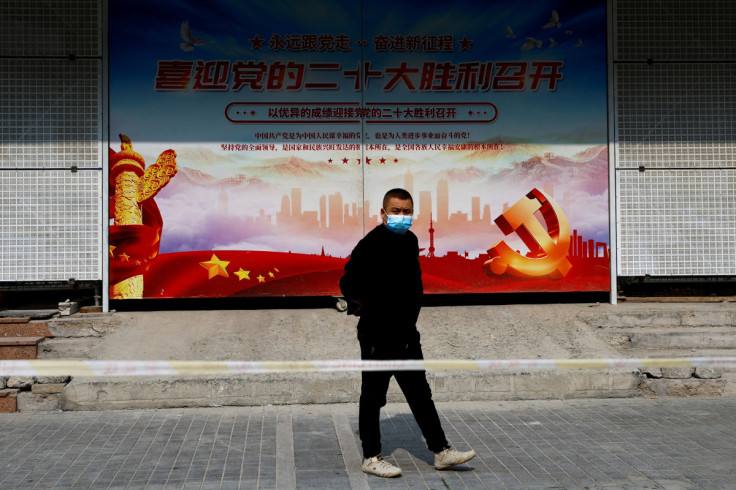Factbox-How China's Communist Party Congress Works

Chinese President Xi Jinping is poised to win a third five-year term as General Secretary of the ruling Communist Party, the most powerful job in the country, at the 20th Party Congress that starts on Sunday.
The conclave of roughly 2,300 party leaders held every five years takes place at the vast Great Hall of the People on Beijing's Tiananmen Square, with much of the proceedings behind closed doors and lasting about a week.
Based on recent iterations of the congress, here is how it is likely to proceed:
XI JINPING'S TITLES
A third term as general secretary breaks with the two-term limit of recent precedent.
Xi's other titles are chairman of the central military commission, which is widely expected to be renewed during the congress, and president, which is up for renewal at the annual parliamentary meeting in March.
THE OPENING
The ritual begins with dozens of leaders walking into the main hall to thunderous applause and the stirring "Welcome March" song before taking their seats on-stage against a backdrop of giant red flags and a hammer and sickle plaque.
Retired senior leaders are expected to join in, if their health permits. Notable former leaders include nonagenarian Jiang Zemin and his premier, Zhu Rongji; and Hu Jintao, Xi's most recent predecessor.
During the opening ceremony, which is broadcast with a delay, Xi will read out the 20th party congress report, reviewing the party's achievements of recent years and laying out its vision for the next five years.
At the 19th party congress, the opening speech lasted 3 hours and 24 minutes.
FOR THE REST OF THE WEEK
The 2,296 retreat behind closed doors in smaller groups to discuss the report, personnel, and the draft of an amendment to the party charter.
Delegates propose minor tweaks to the report and charter amendment, which are reflected in final versions that are later put to vote.
THE CLOSING CEREMONY
At the closing ceremony, typically a week after the start, delegates vote to endorse the congress report and party constitution amendment.
They also elect a new Central Committee - roughly 200 full members with voting rights and about 170 alternates - from a pre-selected shortlist that in recent congresses included about 30 more names than seats available.
THE FIRST PLENUM
This is a big day.
A day after the congress, the newly elected Central Committee convenes behind closed doors at its first plenum.
In a process that is shrouded in secrecy, a list will have been compiled of the next Politburo, which is usually 25 people, and its Standing Committee, which currently numbers seven but has usually ranged between five and nine.
Experts say that the two lists have typically been finalised before the congress begins.
The 200 Central Committee members with voting rights then vote "yes" or "no" on each of the proposed candidates for the two committees.
Later that day, the new general secretary - almost certainly Xi - leads the new Standing Committee into a room at the Great Hall of the People where journalists are gathered.
The Standing Committee members enter in order of seniority, highest to lowest.
The general secretary then introduces his new team and speaks about the work ahead.
IS THAT THE END?
Not entirely.
The party's leadership reshuffle is at this point complete, but key government positions are still to be determined and finalised at the annual session of China's National People's Congress, or parliament, which typically begins in March.
It is there that Xi is expected to extend his presidency - having done away with the two-term limit in 2018. It is also there that Li Keqiang will step down as premier after two terms.
The party congress will determine who succeeds Li as premier in March: at the upcoming Standing Committee reveal, the senior-most member after Xi (or after Li, if he remains on the committee) will be on track to be named premier in March.
© Copyright Thomson Reuters 2024. All rights reserved.





















